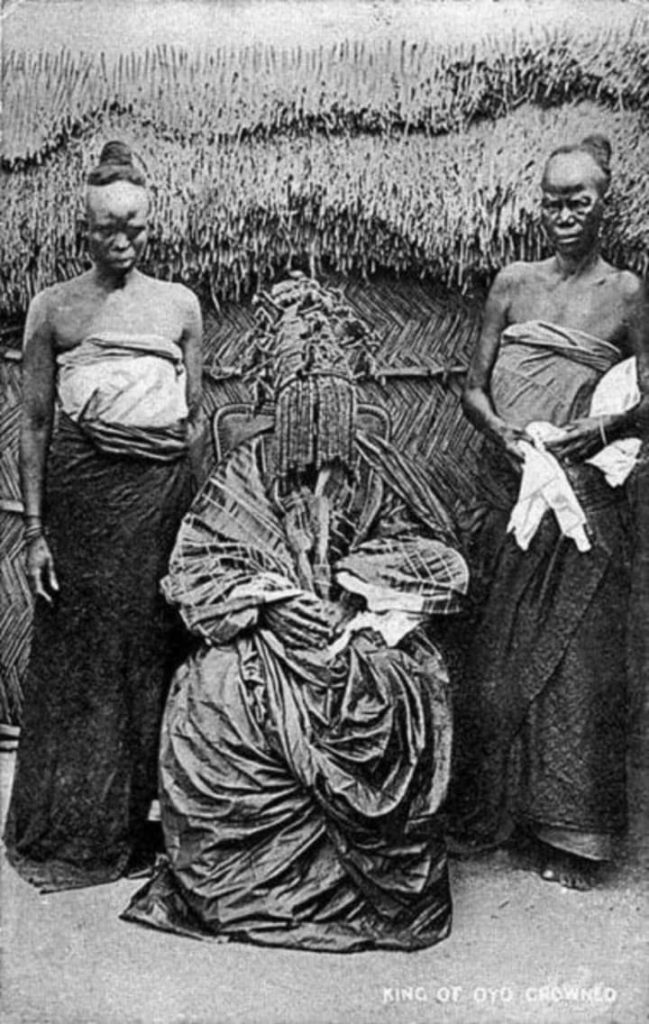Article Written by Oluwadamilare O.Ojo
Orompoto ruled the Oyo Empire in the 16th century, speculatively from 1554 to 1562. She had to prove her masculinity within 7 days before ascending the throne.

In Africa, it was forbidden for a woman to lead the affairs of the society, most especially in royalty. This gender discrimination was increasingly prevalent in the ancient Yoruba empire. Having a male child (usually eldest) who will carry on the family’s name or heritage (Àrólé) or govern the affairs of the community in his father’s absence was always a contentious issue. Àrólé in the Yoruba Royal Family is known as the Àrèmo. The Àrèmo is likely to be the next Alaafin of the Kingdom. These practices do not allow a female to become a king. However, Orompotoniyun (or Orompoto) made history by becoming the first and only female Alaafin of Oyo, leading the Oyo empire between 1554 to 1562. Alaafin, which means ‘owner of the palace’ in Yoruba, is the head of the empire and supreme overlord of the people responsible for keeping tributaries safe from attack, settling internal quarrels between sub-rulers, and mediating between those sub-rulers and their people.
The Oyo Empire is one of the foremost empires in West Africa. Established in the 12th century, the Oyo Empire grew to become the largest Yoruba state. It rose through the outstanding organisational and administrative skills of the Yoruba people, wealth gained from trade and its powerful cavalry. Alaafin Ajiun Orompotoniyun, was responsible for ruling the Oyo empire in the 16th century, speculatively from 1554 to 1562. She was the daughter of Alaafin Ofinran and the grand-daughter of Alaafin Onigbogi. Both were rulers of the Empire in their own time.
When her father died, her brother, Prince Eguguoju succeeded his father. It was during his reign that the capital city was moved from Oyo ile to Oyo Igboho (New Oyo), after a protracted battle with the Nupes and also as a result of internal fighting. He, however, died at a young age without a male successor. Her younger brothers, Prince Ajiboyede and Prince Tella, were very young. As such, they couldn’t ascend the throne at the time. Consequently, Orompoto would leave her role as a regent (one that was instrumental in driving the Nupe from Oyo in 1555 after a protracted battle) to assume the throne. She pronounced her position as Adilé (a person appointed to administer a community because the previous monarch died, was absent, or was incapacitated) to ascend the throne. This decision didn’t sit well with the council of chiefs as there had been no female rulers in the history of the kingdom.
Therefore, the chiefs and elders started making plans on who to install as the next ruler of the Oyo Empire. For every plan they made, Orompoto was even more determined and insistent that she was the only link to the dynasty and had to ascend the throne. She said that she was ready to prove to them that she was a man and not a woman, which was the only hindrance to her coronation. The chiefs thought it would be a good way to ridicule her and asked her to prove her masculinity and strip naked at the palace in seven days.
This was a singular challenge that made Princess Orompoto to do what in the medical parlance refers to as a complete transgender surgical operation on herself. She started wearing male clothing right after the meeting. She then went ahead to do mastectomy (removal of the breasts), chest reconstruction (constructing a male-contoured chest), phalloplasty (construction of a penis), and scrotoplasty (using vulva to form a scrotum). How she did all these within 7 days without any traces of surgical wounds was still mysterious.
On the D-day, she mounted the podium and removed her cap to reveal her hair which had been cut low. She also went ahead to show her chest which was flat and still, the elders were not impressed until she finally removed her trousers. According to oral history, the chiefs did not only see a penis but also a pendulous scrotum dangling with two ‘testes.’ At that moment, everyone dropped on their chest in prostration and she got enthroned as Alaafin Orompotoniyun. Orompotoniyun came to be popularly known as Ajiun, the custodian of the vagina that kills evil plots.
Orompoto was popular for her innovative use of horses in military battles, and she may have obtained them from Borgu in 1557 (a region in Northwest Nigeria). As an expert horse rider, she devised a brilliant strategy of moving her warriors to attack enemies, placing foot soldiers in front and cavalrymen behind. Broad leaves were tied to the tails of the horses so that when they went fighting, the leaves swept the ground behind them, covering the trails of the horses and men on foot.
Orompoto was a skilled warrior who made a name for herself at the Battle of Ilayi in 1562, fighting for her people. She died in battle, making her the only one of the 40 Alaafin (39 men) who died in battle. When hit by a slew of arrows, she opened her mouth, exposing her teeth as if she were smiling broadly. The enemies fled the battlefield, because they thought she was still alive, making a mocking gesture at them. That was how Oyo later claimed victory.
REFERENCES
1. thestreetjournal.org
2. motivation.africa
3. guardian.ng

5 comments
Hmmm
Perhaps, an hermaphrodite? But her brilliant leaf on horsetail strategy deserves accolades.
This woman was powerful woman in which her name can’t be iraze from the history of Yorubas expecialy in Oyo alafin.
Deolink creative article inspiration personality global Visitionary.
Dada Emmanuel Olayinka
She is a very strong woman and enduring , it is so surprising that she could endured the pain of the surgery.
Tell the Nigeria entertainment Industry to use this story to act a movie please so that the Genzy can know what happened.
Come to think of it SHE WAS THE BOB RISKY OF THAT TIME. Thank you
The movie is out,titled KABIYESI